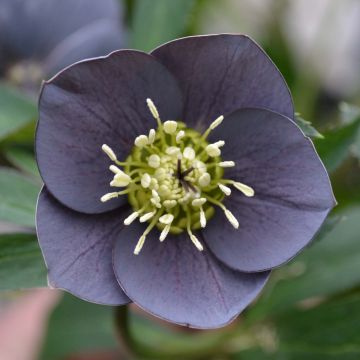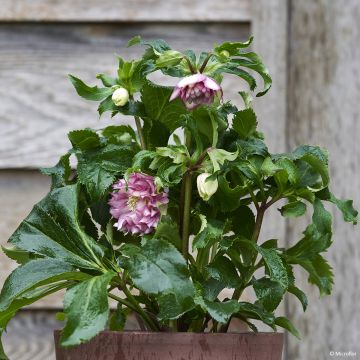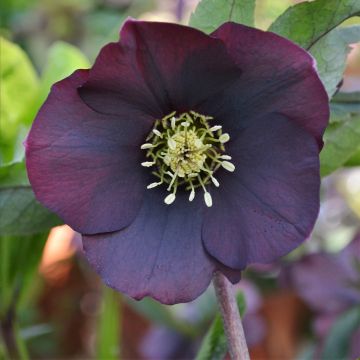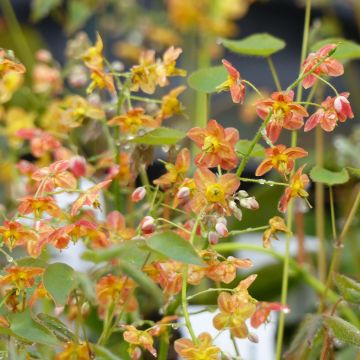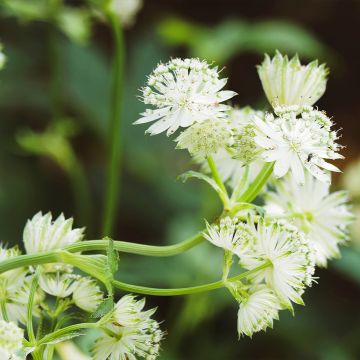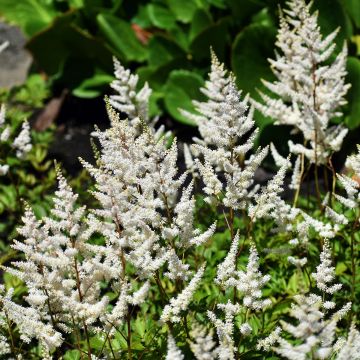

Helleborus hybridus ViV Eloisa
Helleborus hybridus ViV Eloisa
Helleborus x hybridus ViV Eloisa
Lenten Rose, Oriental Hellebore
Special offer!
Receive a €20 voucher for any order over €90 (excluding delivery costs, credit notes, and plastic-free options)!
1- Add your favorite plants to your cart.
2- Once you have reached €90, confirm your order (you can even choose the delivery date!).
3- As soon as your order is shipped, you will receive an email containing your voucher code, valid for 3 months (90 days).
Your voucher is unique and can only be used once, for any order with a minimum value of €20, excluding delivery costs.
Can be combined with other current offers, non-divisible and non-refundable.
Why not try an alternative variety in stock?
View all →This plant carries a 12 months recovery warranty
More information
We guarantee the quality of our plants for a full growing cycle, and will replace at our expense any plant that fails to recover under normal climatic and planting conditions.

Would this plant suit my garden?
Set up your Plantfit profile →
Description
Eloisa is a variety of Oriental Hellebore with autumn flowering in a resplendent purple. Flowering for several weeks from September, this Lenten Rose produces single, purple flowers, illuminated by a yellow stamen centre. These flowers mingle with the foliage and overshadow it, forming a superb scene at a time of year when flowering becomes rare. This evergreen perennial forms a dense clump of about fifty centimetres in all directions. It can be grown in a large pot to decorate a balcony, as well as in the ground in the garden where it requires a shady exposure and neutral to limestone soil, but will tolerate some acidity. It is hardy enough to be planted in practically all regions.
Hellebore Eloisa is a member of the Ranunculaceae family, which includes about sixty genera and around 2500 species. Many are poisonous and contain substances which are toxic if ingested - a natural protection to prevent them from being grazed by herbivores. Despite this, they are valuable plants in the garden, as many genera are highly ornamental thanks to their remarkable flowering, such as Anemones, Buttercups, Trollius, Aconites, and many others including Clematis. The species Helleborus orientalis is native to Greece, Turkey, and the centre and east of the Caucasus. It is a perennial plant that hybridizes very easily with other species to produce hybrids with very varied colours and shapes, so much so that these hybrids are rarely given variety names. Instead, they are distinguished by shape and colour characteristics. Hellebore is a hardy plant that can tolerate temperatures down to -15°C (5°F), naturally growing in forests, thickets, and clearings up to 2,000 m (6.600 ft) altitude.
Eloisa is a variety distributed by a Belgian company specializing in the selection and in vitro multiplication of Hellebores. This method of propagation ensures perfect gene transmission and variety stability, so they are all perfectly identified by their name. Eloisa is part of a large collection of hybrids selected for their compactness and floribundity. This variety forms a clump 40 cm (16in) high and wide, particularly well suited for pot cultivation. Place it on your balcony or terrace and this beautiful potted plant will give you a lovely winter spectacle. The leaves are evergreen in winter and only live for 8 months, regularly replaced by new leaves. Their sculptural shape is particularly decorative throughout the year.
Eloisa blooms early, from September, and for several weeks. The five imbricated petals form a cup-shaped corolla with delicately wavy edges. They are crossed by many small purple veins that give colour to the flowers. A dense centre of yellow stamens further enhances the look of these magnificent autumn flowers. This floriferous perennial is adorned with flowers that mingle with the foliage or rise above it, carried by delicately curved stems. As with most Hellebore varieties, these corollas are arranged vertically or even slightly inclined downward, allowing water to slide off like an umbrella, preventing accumulation in the centre that could cause rot. Hellebore does not like to be moved once established, and young plants sometimes take time to flower. Be sure to choose their location carefully.
This perennial adapts to neutral to chalky (limestone) soils, even slightly acidic, preferably rich, and retaining some moisture, although an established plant can withstand dry conditions. Make sure the soil is well-drained, as Hellebores do not like excess water in winter. It will be well-placed under a leafy tree that allows the winter sun to pass through but protects it from the intense summer sun. Its compact, wider-than-tall habit makes it a superb potted plant to decorate a balcony or terrace.
This Lenten Rose will delight you with its exquisite purple flowering in autumn. You can associate it with other varieties of Hellebore, whose staggered flowering will allow you to enjoy flowers in winter until early spring. The shorter autumn days are not necessarily synonymous with gloom, as other perennials or shrubs can accompany Eloisa's flowering. For example, Pheasant Berry, or Leycesteria formosa, which is actually not a tree but a medium-sized shrub, will tolerate the partial shade necessary for Hellebores while providing a quality backdrop in your border. Its original bracts of purple-red will complement Eloisa's flowers, while its foliage takes on beautiful yellow-orange colours. Consider incorporating decorative fruit-bearing plants, such as Symphoricarpos, charming small shrubs with colourful berries that are well adapted to the semi-shaded situations that Hellebores like.
Report an error about the product description
Helleborus hybridus ViV Eloisa in pictures






Flowering
Foliage
Plant habit
Safety measures
Botanical data
Helleborus
x hybridus
ViV Eloisa
Ranunculaceae
Lenten Rose, Oriental Hellebore
Cultivar or hybrid
ingestion
Cette plante est toxique si elle est ingérée volontairement ou involontairement.
Ne la plantez pas là où de jeunes enfants peuvent évoluer, et lavez-vous les mains après l'avoir manipulée.
Pensez à conserver l'étiquette de la plante, à la photographier ou à noter son nom, afin de faciliter le travail des professionnels de santé.
Davantage d'informations sur https://plantes-risque.info
Planting and care
Oriental Hellebore Eloisa grows in any neutral to moderately chalky soil, even slightly acidic, rich, light or clayey, in partial or light shade, sheltered from cold and dominant winds. Avoid direct sunlight during the hottest hours by choosing a shady (partly shady in the north) exposure. This perennial should be planted from early autumn to spring. It thrives in deeply worked soil mixed with organic matter. To feed it, use bone meal or another organic fertilizer. Water the plants well, then add a layer of mulch 2 to 5 cm (1 to 2in) thick. Regularly remove faded leaves to improve flowering. Make sure to respect a planting distance of 30 to 40 cm (12 to 16in) between each plant to promote their development. Hellebores do not tolerate stagnant water as it can cause them to rot.
The roots should not completely dry out in summer. Hellebores can be affected by a fungal disease transmitted by aphids called black spot. Remove any stained leaves when the flower buds appear. Remove faded flowers after seeds fall. They can also suffer from grey rot or die from collar rot, often due to poor growing conditions in excessively wet situations.
You can also plant this perennial in a pot on a balcony or terrace, but make sure to choose a sufficiently large pot for its root system to develop properly. This hardy Hellebore can withstand negative temperatures down to -15°C (5°F) or even lower, allowing it to adapt practically anywhere.
Planting period
Intended location
Care
This item has not been reviewed yet - be the first to leave a review about it.
Similar products
Haven't found what you were looking for?
Hardiness is the lowest winter temperature a plant can endure without suffering serious damage or even dying. However, hardiness is affected by location (a sheltered area, such as a patio), protection (winter cover) and soil type (hardiness is improved by well-drained soil).

Photo Sharing Terms & Conditions
In order to encourage gardeners to interact and share their experiences, Promesse de fleurs offers various media enabling content to be uploaded onto its Site - in particular via the ‘Photo sharing’ module.
The User agrees to refrain from:
- Posting any content that is illegal, prejudicial, insulting, racist, inciteful to hatred, revisionist, contrary to public decency, that infringes on privacy or on the privacy rights of third parties, in particular the publicity rights of persons and goods, intellectual property rights, or the right to privacy.
- Submitting content on behalf of a third party;
- Impersonate the identity of a third party and/or publish any personal information about a third party;
In general, the User undertakes to refrain from any unethical behaviour.
All Content (in particular text, comments, files, images, photos, videos, creative works, etc.), which may be subject to property or intellectual property rights, image or other private rights, shall remain the property of the User, subject to the limited rights granted by the terms of the licence granted by Promesse de fleurs as stated below. Users are at liberty to publish or not to publish such Content on the Site, notably via the ‘Photo Sharing’ facility, and accept that this Content shall be made public and freely accessible, notably on the Internet.
Users further acknowledge, undertake to have ,and guarantee that they hold all necessary rights and permissions to publish such material on the Site, in particular with regard to the legislation in force pertaining to any privacy, property, intellectual property, image, or contractual rights, or rights of any other nature. By publishing such Content on the Site, Users acknowledge accepting full liability as publishers of the Content within the meaning of the law, and grant Promesse de fleurs, free of charge, an inclusive, worldwide licence for the said Content for the entire duration of its publication, including all reproduction, representation, up/downloading, displaying, performing, transmission, and storage rights.
Users also grant permission for their name to be linked to the Content and accept that this link may not always be made available.
By engaging in posting material, Users consent to their Content becoming automatically accessible on the Internet, in particular on other sites and/or blogs and/or web pages of the Promesse de fleurs site, including in particular social pages and the Promesse de fleurs catalogue.
Users may secure the removal of entrusted content free of charge by issuing a simple request via our contact form.
The flowering period indicated on our website applies to countries and regions located in USDA zone 8 (France, the United Kingdom, Ireland, the Netherlands, etc.)
It will vary according to where you live:
- In zones 9 to 10 (Italy, Spain, Greece, etc.), flowering will occur about 2 to 4 weeks earlier.
- In zones 6 to 7 (Germany, Poland, Slovenia, and lower mountainous regions), flowering will be delayed by 2 to 3 weeks.
- In zone 5 (Central Europe, Scandinavia), blooming will be delayed by 3 to 5 weeks.
In temperate climates, pruning of spring-flowering shrubs (forsythia, spireas, etc.) should be done just after flowering.
Pruning of summer-flowering shrubs (Indian Lilac, Perovskia, etc.) can be done in winter or spring.
In cold regions as well as with frost-sensitive plants, avoid pruning too early when severe frosts may still occur.
The planting period indicated on our website applies to countries and regions located in USDA zone 8 (France, United Kingdom, Ireland, Netherlands).
It will vary according to where you live:
- In Mediterranean zones (Marseille, Madrid, Milan, etc.), autumn and winter are the best planting periods.
- In continental zones (Strasbourg, Munich, Vienna, etc.), delay planting by 2 to 3 weeks in spring and bring it forward by 2 to 4 weeks in autumn.
- In mountainous regions (the Alps, Pyrenees, Carpathians, etc.), it is best to plant in late spring (May-June) or late summer (August-September).
The harvesting period indicated on our website applies to countries and regions in USDA zone 8 (France, England, Ireland, the Netherlands).
In colder areas (Scandinavia, Poland, Austria...) fruit and vegetable harvests are likely to be delayed by 3-4 weeks.
In warmer areas (Italy, Spain, Greece, etc.), harvesting will probably take place earlier, depending on weather conditions.
The sowing periods indicated on our website apply to countries and regions within USDA Zone 8 (France, UK, Ireland, Netherlands).
In colder areas (Scandinavia, Poland, Austria...), delay any outdoor sowing by 3-4 weeks, or sow under glass.
In warmer climes (Italy, Spain, Greece, etc.), bring outdoor sowing forward by a few weeks.






























